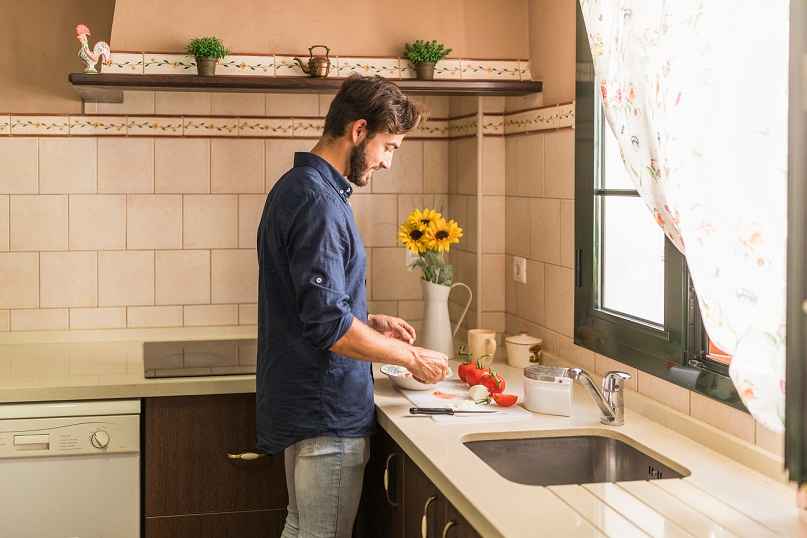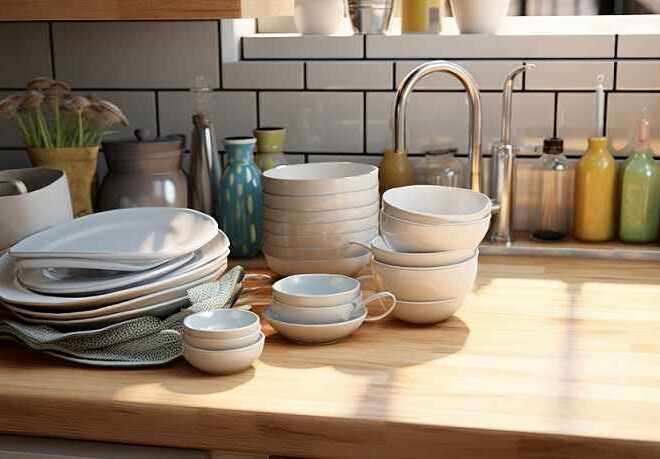
Understanding Standard Kitchen Counter Height: What You Need to Know
When it comes to designing your dream kitchen, the details matter—especially the height of your counters. Imagine preparing a meal without straining your back or hunting for that elusive spice on a shelf that’s just out of reach. The right counter height can transform not only how you cook but also how you feel while doing it! In this blog post, we’ll dive into everything you need to know about standard kitchen counter heights, from ergonomics and functionality to style and trends. Whether you’re renovating an existing space or starting from scratch, understanding these dimensions will help you create a kitchen that’s as comfortable as it is beautiful. Let’s get measuring and make those culinary dreams come true!
Introduction to kitchen counter height
The smallest details make a big difference in kitchen design. One of the most crucial aspects often overlooked is the height of your kitchen counters. It may seem like a trivial consideration, but counter height plays a significant role in both functionality and comfort during meal prep, cooking, and entertaining guests. Whether you’re whipping up a gourmet dish or simply enjoying coffee with friends, having the right counter height can make all the difference.
So why should you care about kitchen counter height? Understanding its importance can enhance not only your culinary experience but also elevate your entire kitchen aesthetic. Let’s dive into everything you need to know about this essential element of kitchen design.
Why is counter height important in a kitchen?
Counter height plays a crucial role in kitchen functionality. It directly impacts how comfortable and efficient cooking can be.
When counters are too high or too low, it can lead to unnecessary strain on your back and arms. This discomfort is particularly noticeable during extended meal prep sessions.
Additionally, the right counter height facilitates better interaction with family and friends. Whether you’re serving up snacks or enjoying breakfast together, everyone benefits from an inclusive design that accommodates various heights.
Moreover, proper counter height influences storage options beneath the surface. If designed well, it allows for easier access to pots and pans without bending awkwardly or stretching excessively.
Lastly, aesthetics matter as well; a cohesive look throughout your space hinges on standard measurements aligning seamlessly with cabinets and appliances.
Standard measurements for kitchen counters
Standard kitchen counter height typically measures 36 inches from the floor. This height suits most people for tasks like chopping, mixing, and assembling meals.
For those who prefer a bit more space, some counters rise to 38 or even 39 inches. These slightly elevated surfaces can provide extra comfort for taller individuals during daily chores.
Depth is also crucial; standard countertops are usually around 25 to 26 inches deep. This measurement allows ample room for food preparation while maintaining accessibility to appliances and storage areas.
When it comes to island designs, the height may vary. A common range is between 42 and 48 inches if you’re considering a breakfast bar style. This elevation creates an inviting area for casual dining or socializing with family and friends.
Understanding these measurements helps ensure your kitchen functions efficiently while catering to everyone’s needs.
Factors to consider when choosing the right counter height
Choosing the right kitchen counter height involves several important factors. First, consider your personal height and that of others who frequently use the kitchen. A comfortable working surface ensures a pleasant cooking experience.
Next, think about the primary tasks you perform in the kitchen. Baking may require different heights than food prep or casual dining.
The overall look and feel you want for your kitchen impacts the details. Open-concept spaces might benefit from varying heights to create defined areas without walls.
Additionally, if you have kids or elderly family members at home, adjustable options could enhance safety and accessibility.
Finally, flooring materials should not be overlooked; they can affect how high counters feel when standing on them versus walking around barefoot. Each factor contributes to achieving an ergonomic balance for daily activities in this central hub of your home.
Types of standard counter heights (i.e. for islands, breakfast bars)
When it comes to kitchen counter heights, different areas serve distinct purposes. Standard countertop height typically measures 36 inches, perfect for food prep and cooking tasks.
Islands often follow this norm but can also feature variations. For instance, an island designed for bar seating may rise to around 42 inches. This height encourages casual dining and socializing while allowing easy access to the work area.
Breakfast bars are another special case. These spaces usually hover between 38 and 42 inches high, ideal for quick meals or morning coffee catch-ups. They provide a comfortable perch without straining your back.
Understanding these height distinctions helps create a cohesive kitchen layout that caters to various activities and comfort needs. The right measurements enhance both functionality and style in any home chef’s paradise.
How to measure and adjust counter height if needed
Measuring your kitchen counter height is straightforward. Use a tape measure to find the distance from the floor to the top of the counter. Ensure you’re measuring at multiple points, as floors can be uneven.
If adjustments are necessary, consider options like raising or lowering cabinets. For minor height changes, cabinet risers can effectively increase height while maintaining stability.
In some cases, replacing countertops may be an option for achieving desired measurements. Choose materials that match your aesthetic and functionality needs.
For islands or breakfast bars requiring specific heights, stools and chairs should also be taken into account. The right seat height enhances comfort during meals and gatherings.
Lastly, don’t forget about ergonomics! A comfortable working surface is vital for meal prep and cooking tasks. Tailor your space to fit both style preferences and practical use.
Tips for designing a kitchen with the right counter height
When designing a kitchen, selecting the right counter height is crucial for both functionality and comfort. Start by considering who will primarily use the space. Taller individuals may benefit from slightly higher counters, while shorter users might prefer standard or lower options.
Incorporate multiple heights to accommodate various tasks. For instance, having a raised island can serve as an ideal breakfast bar while providing additional prep space at standard height nearby.
Consider your appliances too. Ensure that built-in elements like ovens and dishwashers align comfortably with your counter height for seamless transitions during cooking and cleanup.
Lighting plays a significant role in design as well. Pendant lights above islands should hang low enough to provide ambiance without obstructing views or workspace.
Lastly, don’t hesitate to customize! A bespoke design tailored specifically to your needs can transform not just aesthetics but also usability in your kitchen.
Conclusion: The importance of understanding standard counter height for a functional and comfortable kitchen design.
Understanding standard kitchen counter height is essential for creating a functional and comfortable space. The right counter height can significantly impact your cooking experience, making meal preparation more efficient and enjoyable.
When you choose a counter that matches the needs of your family or yourself, it enhances usability and prevents discomfort during long hours in the kitchen. It’s also crucial to consider the specific purpose of different areas within your kitchen, such as islands or breakfast bars, each requiring its own optimal height.
Adjusting existing counters may be necessary if they don’t align with standard measurements. This ensures everyone can work comfortably without straining their backs or bending excessively.
Ultimately, prioritizing proper kitchen counter height will lead to a more inviting atmosphere where culinary creativity thrives. A well-designed kitchen not only looks good but feels good too, allowing you to enjoy every moment spent cooking and gathering with loved ones.


